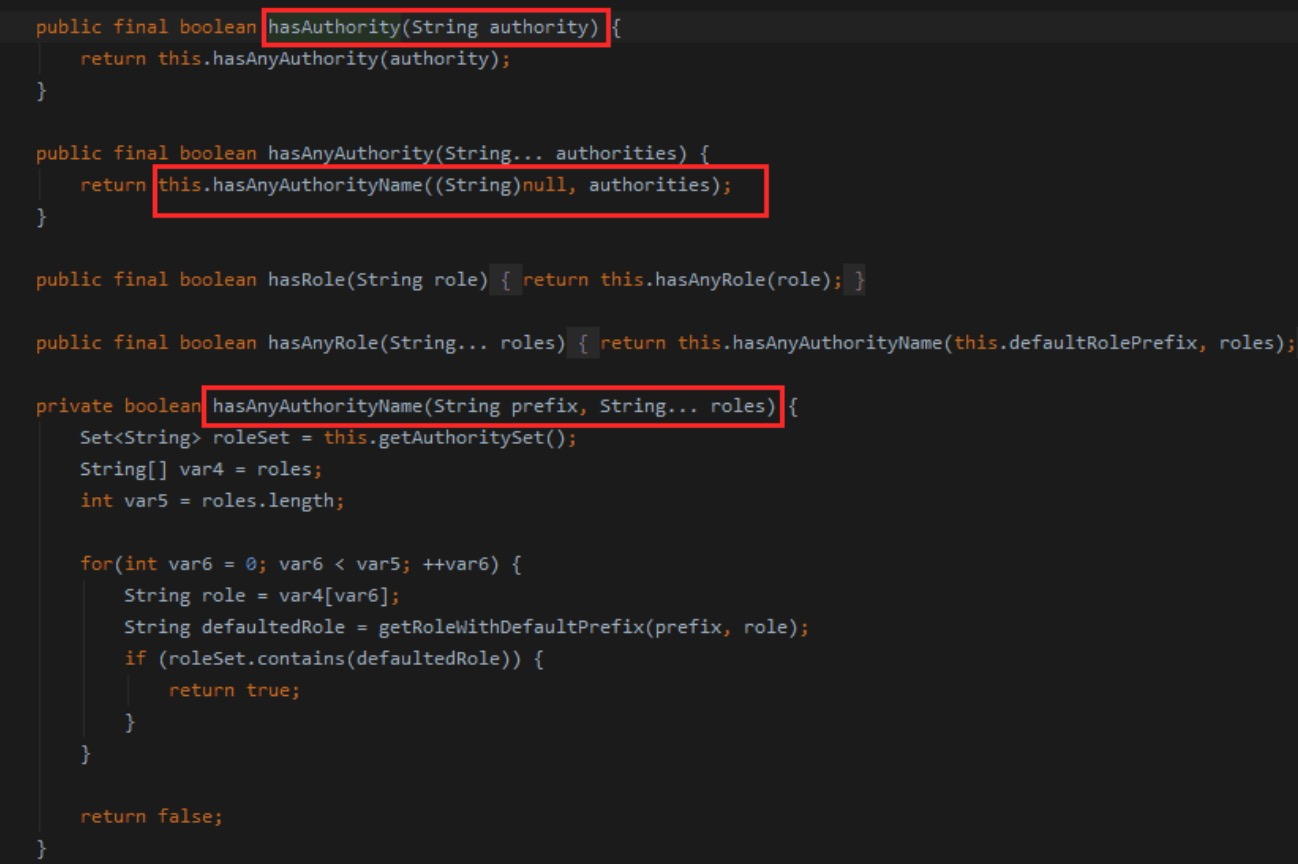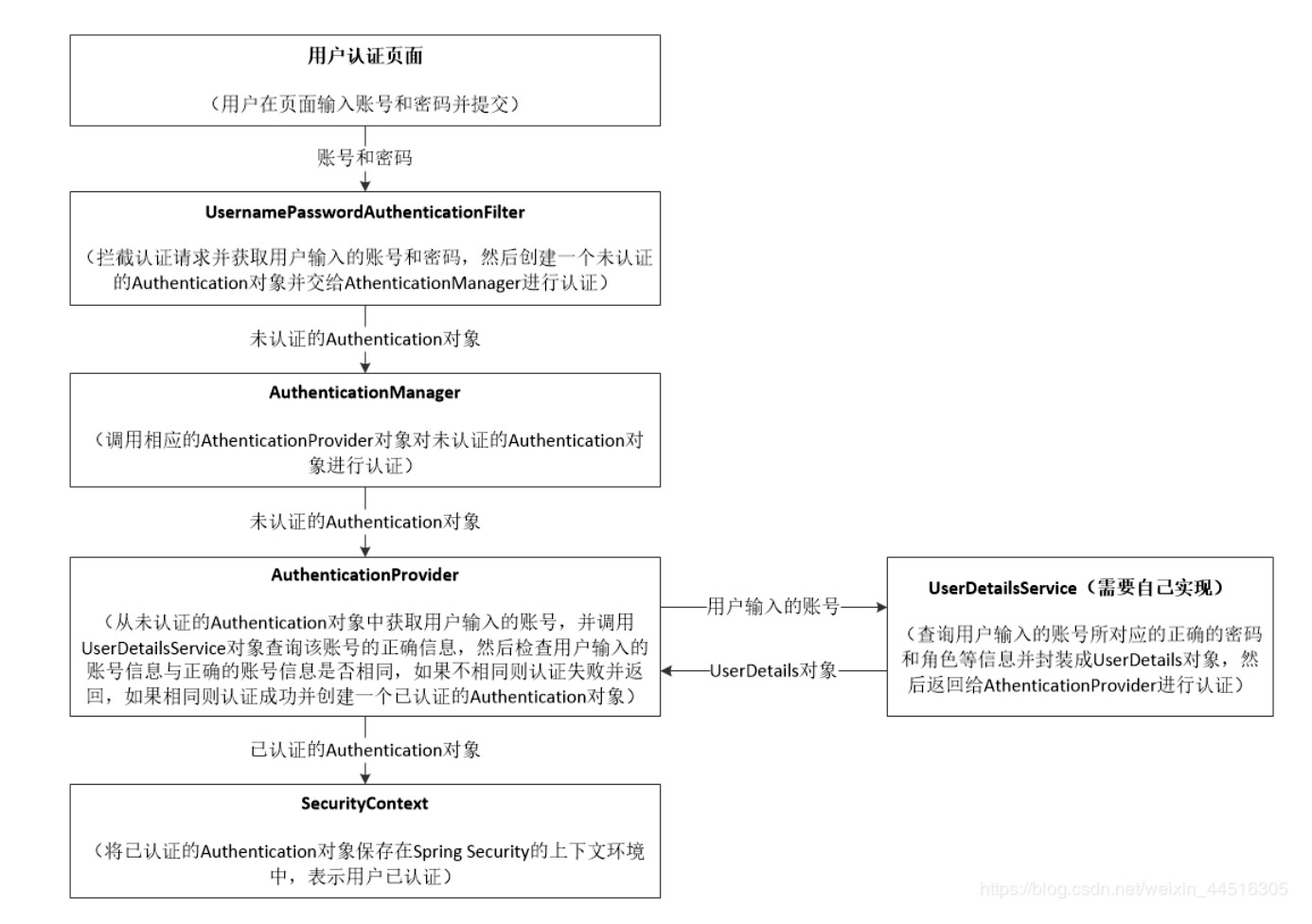【深入浅出Spring原理及实战】「开发实战系列」SpringSecurity技术实战之通过注解表达式控制方法权限
Spring Security权限控制机制
Spring Security中可以通过表达式控制方法权限,其中有四个支持使用表达式的注解,分别是@PreAuthorize、@PostAuthorize、@PreFilter和@PostFilter。其中前两者可以用来在方法调用前或者调用后进行权限检查,后两者可以用来对集合类型的参数或者返回值进行过滤。
启动Security机制的配置
它们的定义能够对我们的方法的调用产生影响我们需要设置global-method-security元素的pre-post-annotations=”enabled”,默认为disabled。
xml配置方式
<security:global-method-security pre-post-annotations="disabled"/>
JavaConfig配置方式
类上增加@EnableGlobalMethodSecurity(securedEnabled = true)注解,secureEnabled默认为false,使其赋值为true才能使用相关注解。
@SpringBootApplication
@EnableGlobalMethodSecurity(securedEnabled = true)
public class XXXApplication {
public static void main(String[] args) {
SpringApplication.run(XXXApplication.class, args);
}
}
@PreAuthorize和@PostAuthorize进行访问控制
@PreAuthorize 注解,顾名思义是进入方法前的权限验证,@PreAuthorize 声明这个方法所需要的权限表达式,例如:@PreAuthorize(“hasAuthority(‘sys:dept:delete’)”),@PreAuthorize 表示访问方法或类在执行之前先判断权限,一般都是使用这个注解,注解的参数和access()方法参数取值相同,都是权限表达式。若有多个权限,可用逗号隔开。
根据这个注解所需要的权限,再和当前登录的用户角色所拥有的权限对比,如果用户的角色权限集Set中有这个权限,则放行;没有,拒绝
@GetMapping("/query")
//以下几个注解都表示ADMIN用户具有访问"/query"接口的权限
@PreAuthorize("hasAnyRole('ADMIN')")
@Secured("ROLE_ADMIN")//以ROLE_开头,不能缺少
@PostAuthorize("hasAnyRole('ADMIN')")
public String query(){
return "querySuccess";
}
定义相关的接口上
public interface UserService {
public boolean ifhaveuser(String username,String password);
List<User> findAllUsers();
User findById(int id);
@PreAuthorize("hasRole('ROLE_ADMIN')")
void updateUser(User user);
@PreAuthorize("hasRole('ROLE_ADMIN')")
void deleteUser(int id);
}
@Service
public class UserServiceImpl implements UserService {undefined
@PreAuthorize("hasRole('ROLE_ADMIN')")
public void addUser(User user) {undefined
System.out.println("addUser................" + user);
}
@PreAuthorize("hasRole('ROLE_USER') or hasRole('ROLE_ADMIN')")
public User find(int id) {undefined
System.out.println("find user by id............." + id);
return null;
}
}
在上面的代码中我们定义了只有拥有角色ROLE_ADMIN的用户才能访问adduser()方法,而访问find()方法需要有ROLE_USER角色或ROLE_ADMIN角色。使用表达式时我们还可以在表达式中使用方法参数。
PreAuthorize的EL表达式
public class UserServiceImpl implements UserService {undefined
/**
* 限制只能查询Id小于10的用户
*/
@PreAuthorize("#id<10")
public User find(int id) {undefined
System.out.println("find user by id........." + id);
return null;
}
/**
* 限制只能查询自己的信息
*/
@PreAuthorize("principal.username.equals(#username)")
public User find(String username) {undefined
System.out.println("find user by username......" + username);
return null;
}
/**
* 限制只能新增用户名称为abc的用户
*/
@PreAuthorize("#user.name.equals('abc')")
public void add(User user) {undefined
System.out.println("addUser............" + user);
}
}
在上面代码中我们定义了调用find(int id)方法时,只允许参数id小于10的调用;调用find(String username)时只允许username为当前用户的用户名;定义了调用add()方法时只有当参数user的name为abc时才可以调用。

- @Secured使用时必须要加上ROLE_前缀,不可省略。@PreAuthorize 也可加上ROLE_前缀,不过其可以省略。
用户的角色权限Set,是什么时候存入的,其流程如下

PostAuthorize的EL表达式
- @PostAuthorize表示方法或类执行结束后判断权限,很少使用。
有时候可能你会想在方法调用完之后进行权限检查,这种情况比较少,但是如果你有的话,Spring Security也为我们提供了支持,通过@PostAuthorize可以达到这一效果。使用@PostAuthorize时我们可以使用内置的表达式returnObject表示方法的返回值。
下面这一段示例代码:
@PostAuthorize("returnObject.id%2==0")
public User find(int id) {undefined
User user = new User();
user.setId(id);
return user;
}
上面这一段代码表示将在方法find()调用完成后进行权限检查,如果返回值的id是偶数则表示校验通过,否则表示校验失败,将抛出AccessDeniedException。
注意的是@PostAuthorize是在方法调用完成后进行权限检查,它不能控制方法是否能被调用,只能在方法调用完成后检查权限决定是否要抛出AccessDeniedException。
@PreFilter和@PostFilter进行过滤
使用@PreFilter和@PostFilter可以对集合类型的参数或返回值进行过滤。使用@PreFilter和@PostFilter时,Spring Security将移除使对应表达式的结果为false的元素。
@PostFilter("filterObject.id%2==0")
public List<User> findAll() {undefined
List<User> userList = new ArrayList<User>();
User user;
for (int i=0; i<10; i++) {undefined
user = new User();
user.setId(i);
userList.add(user);
}
return userList;
}
上述代码表示将对返回结果中id不为偶数的user进行移除。filterObject是使用@PreFilter和@PostFilter时的一个内置表达式,表示集合中的当前对象。当@PreFilter标注的方法拥有多个集合类型的参数时,需要通过@PreFilter的filterTarget属性指定当前@PreFilter是针对哪个参数进行过滤的。
参考资料
https://www.jianshu.com/p/3ddd2b31cb86
